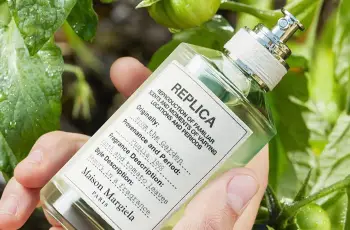
Cystic Acne
Why do I get acne cysts?
Cystic acne occurs in men, women and teenagers. It is most often seen as bumps and cysts along the jawline. These cystic pimples are often recurring. Deep cystic acne can occur anywhere on the face such as the chin, cheeks and forehead or on the body such as the chest, scalp, back and buttocks. What causes cystic acne? Is cystic acne hormonal? What are the best treatments for cystic acne? Before we answer these questions, I will explain what cystic acne is.
Remember, it is always best to shop by your Baumann Skin Type when choosing skin care products.
Take the Quiz
What is Cystic Acne?
A true acne cyst is a clogged hair follicle filled with bacteria that has been walled off by the body’s immune system to keep the acne-causing bacteria from spreading. When the body’s natural inflammation cycle occurs, the pore gets clogged. This causes a comedone. The closed pore allows pressure to build up inside the hair follicle, stretching out the hair follicle allowing more room for bacteria, pus, keratin and dead keratinocytes. If untreated, the pressure eventually ruptures the wall of the hair follicle leading to scarring.
What is the white stuff that comes out of a cyst?
Acne cysts are filled with white pus. What is in this white liquid in cysts?
The hair follicle is lined with epidermal cells called keratinocytes. These keratinocytes make a protein called keratin. (This is why they are called keratinocytes.)
The thick white smelly stuff in a cyst is keratin. Keratin is the same protein that makes hair and nails.
How cysts form?
When the pore becomes clogged and a closed comedone forms, there is a build up of debris inside the the hair follicle.
The contents of this debris in an acne cyst are :
Sebum (oil)
Keratin
Dead keratinocytes
Exudate from immune cells we call pus
Acne causing bacteria known as Cutibacterium acnes. (The name was changed from P. acnes to C. acnes)
What Is Cystic Acne?
Cystic acne starts in the hair follicle which opens as a pore on the skin’s surface.
The hair follicles get clogged hair with dead skin cells and keratin which causes comedones. Why do the hair follicles get clogged? Click here to read more about this.
When dead skin cells and oil accumulate in the hair follicle, bacteria is attracted to the hair follicle. This triggers inflammation which brings fluid to the area. Accumulation of the inflammatory fluid, desquamated skin cells, and keratin protein further increase the intrafollicular pressure.
The pressure caused by the build up of dead skin cells, pus, and fluids breaks the wall of the hair follicle, allowing bacteria into the skin. The body recognizes this bacteria as foreign and mounts an immune response. Immune cells surround the bacteria and pus and wall it off to prevent spread of infection to other parts of the body. This leads to a cyst.
If you pick at the acne cyst, it can turn into an epidermal inclusion cyst which must be removed by a small surgical procedure. Scarring can also occur with cystic acne because of damage to the walls of the hair follicle.
What causes cystic acne?
Cystic acne in men and women is caused by a combination of these factors:
Hormones
Lipid composition of sebum
Stress
Debris such as sunscreen and silicones left on the face
Comedogenic skin care ingredients
Altered keratinization and impaired desquamation
Skin microbiome
Insulin like growth factor levels
Sugar in diet
How to Treat Cystic Acne?
Can you cure cystic acne? Yes but the best way to cure cystic acid is to begin a retinoid. You can try a topical one first, but if you have severe cystic acne you should see a dermatologist because you may need a prescription for an oral retinoid.
The best way to treat cystic acne is to get on the right products for your Baumann Skin Type. Let our dermatologists guide you by choosing products based on your Baumann Skin Type.
Vitamins To Use if You Have Cystic Acne
Retinoids are a form of Vitamin A. You can take Vitamin A supplements to treat acne but you must be careful not to take more than 4,000 IU’s per day. Vitamin A is a fat soluble vitamin which means it is toxic when too much is taken. Vitamin A can also cause birth defects if taken while pregnant. It is much safer to see a dermatologist to treat your acne cysts then trying to manage it naturally by yourself. Retinoids are a safe way to treat acne cysts but should be carefully monitored by your doctor with blood test that follow your liver function and triglycerides and cholesterol levels.
Vitamins to Avoid if You Have Cystic Acne
If you have cystic acne, avoid Vitamins B6 and Vitamin B12 because they can cause acne breakouts. These acne cyst causing vitamins are in many body building supplements.
Products to Use and Avoid if You Have Cystic Acne
The best way to avoid getting cystic acne is to avoid using products with comedogenic ingredients. You also need to make sure that when you choose skin care products, you shop by your Baumann Skin Type.


